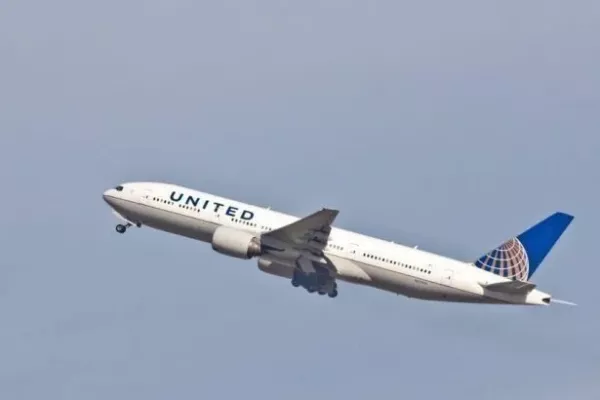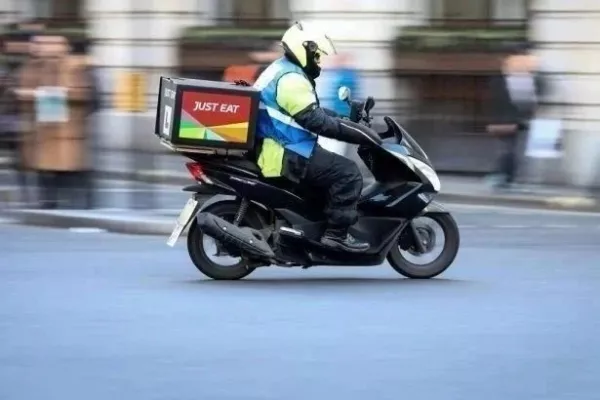United Airlines Holdings UAL.O has unexpectedly forecast a profit for the second quarter, as the company sees booming travel demand generating the highest quarterly revenue in its history.
The Chicago-based carrier's "bullish" outlook for the April-June quarter stood in sharp contrast to analysts' expectations for a loss of 21 cents per share, according to Refinitiv.
Chief executive Scott Kirby in a statement said the demand environment is the "strongest" in his 30-year career in the industry.
"We're now seeing clear evidence that the second quarter will be an historic inflection point for our business," Kirby said.
After a speed bump caused by the Omicron-driven surge in COVID-19 cases early in the year, travel demand has surged back. US passenger traffic has been averaging about 89% of pre-pandemic levels since mid-February, according to Transportation Security Administration data.
With companies bringing their employees back to offices, United said the demand for business travel is "rapidly" bouncing back. Business traffic is the cash cow for passenger carriers.
Since the company's business is more exposed to international travel than its rivals, analysts said easing border restrictions are expected to further boost United's prospects.
United said it expects to post a profit this year. In the second quarter, its total revenue per available seat mile is projected to be up 17% compared with the same period in 2019, translating into an adjusted operating margin of 10%.
Rival Delta Air Lines DAL.N last month said that consumer demand was at a "historic" high, resulting in the highest ticket sales in the company's history.
Robust consumer demand is also allowing carriers to deal with soaring fuel costs, which have gone up 20% in the past month.
United's fuel bill in the first quarter was 20% higher than during the previous quarter, leading to a slightly larger-than-expected quarterly loss. It is projected to increase by 19% quarter-on-quarter in the three months to end-June.
Fuel is the industry's second-biggest expense after labor, but major US airlines do not hedge against volatile oil prices like most European airlines. They typically look to offset fuel cost increases with higher fares.
United has said it is passing along a majority of its fuel cost to customers. The airline's average fares are more than double what they were a year ago, according to data from Cowen.
The company also has adjusted its plans to ramp up capacity in a bid to boost its pricing power. In the current quarter, it expects its capacity to be down 13% from pre-pandemic levels.
United reported an adjusted loss of $4.24 per share for the first quarter, compared with analysts' expectations of a loss of $4.22 per share.
It generated $7.57 billion in quarterly revenue, lower than Wall Street estimates of $7.68 billion.
American Airlines Reports Smaller Loss As Pickup In Travel Offsets Omicron Blip
The above news was followed by news that American Airlines Group Inc AAL.O has reported a smaller adjusted first-quarter loss, as a strong pickup in travel in March helped offset a blip in January caused by the Omicron variant of COVID-19.
The Fort Worth, Texas-based airline reported an adjusted loss of $1.51 billion, or $2.32 per share, for the quarter ended 31 March, compared with a loss of $2.74 billion, or $4.32 per share, a year earlier.
US Airlines Sound Bullish As Bookings Roar Back
All of the above news was followed by news that airlines are back. That's the message major US carriers are sending investors after grappling with coronavirus-induced uncertainty for two years.
With travel demand roaring back after a setback due to the Omicron variant of the virus early in the year, American Airlines Group AAL.O, United Airlines UAL.O and Alaska Air Group Inc ALK.N have said that their revenue in the current quarter would surpass pre-pandemic levels even as their capacity remains below that of 2019.
As a result, they all expect to be profitable in the quarter through June. Last month, rival Delta Air Lines DAL.N also forecast a return to quarterly profit, citing "historic" high bookings.
"A pent-up demand wave for air travel is unraveling the long-term doom-and-gloom sentiment around major airlines," said Colin Scarola, vice president at CFRA Research.
The pace of recovery in demand as well as the bullish outlook have helped airline shares pare losses suffered since the onset of the pandemic. The NYSE Arca Airline index .XAL is still down 32% from its levels in mid-February 2020 -- but has gained 37% since early March.
CFRA has lifted its 12-month target price for United Airlines Holding Inc's shares by 37% to $63 after the Chicago-based carrier said it is on course to post the highest quarterly revenue in its history.
Demand Drivers
While the surge in bookings is largely driven by leisure travelers, carriers said office repoenings and easing border restrictions have bolstered the outlook.
American Airlines Group Inc, for example, said revenue from corporate and government travel as a percentage of 2019 levels increased by 27 percentage points in the quarter through March from the previous quarter.
"Corporate bookings are the highest that they've been since the onset of the pandemic," Chief Executive Robert Isom told investors on an earnings call. "We expect that to continue as more companies reopen their offices."
United expects a 25% growth in its trans-Atlantic traffic this summer. Even parts of Asia are rebounding, the airline said.
The booming demand is also helping carriers deal with soaring fuel costs, which have more than doubled in the past year.
Fuel is the industry's second-biggest expense after labor, but major US airlines do not hedge against volatile oil prices like most European airlines. They typically look to offset fuel cost increases with higher fares.
Capacity Constraints
Airline fares are up more than 50% year-on-year, according to data from research firm Cowen. United, which is passing along a majority of its fuel cost to customers, said the demand for business, leisure and cargo traffic remains strong despite higher ticket prices.
Capacity constraints at carriers due to staffing shortages and delays in aircraft deliveries mean demand is outpacing supplies, boosting the industry's pricing power.
Some analysts are concerned that rising fares and surging inflation could dent travel spending. But United chief executive Scott Kirby said a deepening pilot shortage in the country will make it harder for most airlines to realize their capacity ramp-up plans, boosting the industry's total revenue per seat.
"You put all that together, and we feel very bullish," Kirby said on the company's earnings call.
Air Canada Adds Capacity For Spring Flying After Q1 Loss
In other North American airline news, all of the above news was followed by news that Air Canada AC.TO has said that it is adding capacity to meet a rebound in spring traffic and sees ticket sales and business travel improving after reporting a larger-than-expected quarterly loss, sending shares down more than 5%.
Carriers are benefiting from a broader revival in travel demand as COVID-19 pandemic-related restrictions ease, but face pressures from higher fuel costs.
Chief executive Michael Rousseau said that the Canadian government is reviewing the use of mask and vaccine mandates for airline travel.
Canada's largest carrier is increasing second quarter available seat mile (ASM) capacity by approximately 414% compared with the same three months in 2021.
"This summer, we will be at nearly 80% of 2019, and we're targeting to be close to full recovery during 2024," Air Canada chief commercial officer Lucie Guillemette told analysts.
Guillemette expects positive yields compared with 2019 for corporate travel. Business travel, now 50% below 2019, is expected to improve to 40% below that level by June.
When asked about the possibility of relaxing mask mandates, Transport Minister Omar Alghabra told reporters in Ottawa to "stay tuned" and "we're reassessing every policy that we have."
But Canadian Minister of Health Jean-Yves Duclos also said on Tuesday he thinks "we expect Canadians to keep wearing a mask when they travel by air."
Canada is seeing higher travel demand ahead of the busy summer season and attracted more than one million travelers during the week of 11 April for the first time since the pandemic.
Rousseau said passenger ticket sales last month were more than 90% of March 2019 levels, "a leading indicator to much stronger 2022 second- and third-quarter results."
Air Canada reported quarterly revenues more than doubled from a year ago C$2.57 billion ($2.01 billion) but also reported a loss of C$2.72 per diluted share versus a loss of C$3.90 per diluted share during the same period in 2021.
Analysts were expecting a loss of C$1.49 a share, according to estimates from Refinitiv.
Southwest Airlines Reports Smaller First-Quarter loss, Expects Full-Year Profit
In additional North American airline news, all of the above news was followed by news that Southwest Airlines Co LUV.N has reported a smaller adjusted quarterly loss and said that it expects to be "solidly profitable" for the year as a rebound in travel helped it offset disruptions in January due to the Omicron coronavirus variant.
The company reported an adjusted loss of $191 million, or 32 cents per diluted share for the first quarter, compared with an adjusted loss of $1.0 billion, or $1.72 per diluted share a year earlier.
The airline cancelled more than 5,600 flights in January and said that 5,000 employees, or approximately 10% of its workforce, had contracted the coronavirus in the first three weeks of January.
"Our operational performance improved during February and March 2022 following acute staffing challenges experienced in January due to the Omicron variant," Chief Executive Officer Bob Jordan said.
Texas-based Southwest Airlines said despite $430 million of headwinds, including about $380 million related to fall in bookings and flight cancellations, during the first quarter the airline is upbeat about the sharp rebound in revenue trends in March.
Major US airlines last said that their revenue in the current quarter would surpass pre-pandemic levels even as their capacity remains below that of 2019.
The surge in travel demand is also helping carriers deal with soaring fuel costs, which have more than doubled in the past year. US airlines, which typically do not hedge against oil prices, have been hit by higher fuel costs due to the conflict in Ukraine.
However, Southwest Airlines said that its multi-year fuel hedging program has helped it offset increases in jet fuel price in the first quarter of this year.
The airline's operating revenue rose to $4.7 billion from $2.05 billion a year earlier. The company said that it expected operating revenue for the year to increase between 8% and 12% compared with 2019.
ANALYSIS-Foreign Pilots Rush In As US Carriers Struggle To Staff Up
In further North American airline news, all of the above news was followed by news that pilots are back in demand in the United States. But carriers cannot find enough of them, so foreign pilots are rushing to fill the empty cockpits.
US immigration lawyers report a surge in inquiries and visa applications from pilots based in countries where traffic is still recovering from pandemic lows.
That could bring some relief to an industry struggling to rebuild capacity after a two-year slump, but the trend is stirring a backlash from domestic unions.
It also reflects an uneven global recovery from COVID-19. Coronavirus infections are still rising in many countries although pandemic curbs have been easing in some places. While booming travel demand is projected to help major U.S. carriers surpass their pre-pandemic revenue this quarter, airline traffic in some parts of the world remains depressed.
"While the US has a major shortage, in the rest of the world pilots are out of jobs," said Ana Barbara Schaffert, an attorney at California-based AG Immigration Group.
She has received more than 8,000 requests for consultation in recent months, and is screening over 2,000 resumes from pilots seeking to immigrate to the United States - up more than 90% from before COVID-19.
According to United Airlines UAL.O, pilots are expected to remain in short supply for years. Whereas the United States can produce a maximum of only 7,000 pilots a year, carriers need 13,000 pilots this year and even more next year, United Airlines said.
Limited training capacity, among other issues, remains a barrier to producing pilots.
Staffing woes have marred operations in recent weeks at carriers such as Alaska Air Group Inc ALK.N and JetBlue Airways Corp JBLU.O, resulting in mass flight cancellations. To prevent further disruption, airlines have cut summer schedules.
Shortages are even more acute at regional airlines, which are facing a soaring attrition rate because of poaching by higher-paying national carriers.
American Airlines Group Inc AAL.O last month told investors the pilot attrition rate at its regional carriers was outpacing the hiring rate.
That is drawing interest from pilots in Canada, Europe, Africa and Asia where traffic is still recovering, said Carmen Arce, an attorney at Florida-based Arce Immigration Law.
Arce and Jean-Francois Harvey, global managing partner at Harvey Law Group, said they are also getting inquiries from pilots in Russia, where airlines have been hit hard by Western sanctions.
Three Canadian pilots said they are considering moving to the United States because of Canada's previous strict COVID-19 restrictions, which grounded planes earlier during the pandemic and forced some aviators to seek employment as drivers for Uber Technologies Inc UBER.N.
"Unprecedented" Opportunity
Many foreign pilots have hesitated to apply since immigration in the United States can take up to 26 months and cost as much as $20,000, with no guarantee of success.
"It's like if you wanted to go to Colorado for the (19th century) gold rush, but you were stopped in Michigan," said a Montreal-based pilot for Transat AT Inc's TRZ.TO Air Transat.
"If the green card process changed in the U.S., there would be a lot more pilots leaving (Canada)."
Even so, Schaffert said a widening demand-supply gap has created an "unprecedented" opportunity for experienced foreign pilots. First, they must convince US immigration officials that permanent residency would be in the country's interest.
Under the so-called national interest waiver clause, non-US citizens are allowed to apply for permanent residency without a job offer, making it easier to immigrate.
Schaffert said more than 90% of the applications submitted by her firm for experienced pilots have been approved.
US Citizenship and Immigration Services (USCIS) did not supply data on applications from pilots. But a spokesperson said the agency determines requests on "a case-by-case basis."
The Federal Aviation Administration says the number of foreign-licensed pilots seeking US certificates required to fly large jets increased to 718 in 2021, up about 24% from 2019.
Barriers To Flight
Foreign pilots are also facing opposition from local unions. They want airlines to do more to address barriers to becoming a pilot like the high cost of training, instead of recruiting foreigners.
The Air Line Pilots Association (ALPA), the world's largest pilot union, with more than 62,000 members, said there is an "adequate" domestic supply of qualified pilots.
"ALPA opposes any efforts to use the visa process to undermine pay and benefits for a profession so critical to the U.S. economy and global travel," it said.
Regional and ultra-low-cost carriers like ExpressJet Airlines, CommutAir, Breeze and Frontier Airlines ULCC.O are recruiting Australian pilots, who can use a special visa.
Faye Malarkey Black, head of the Regional Airline Association, said giving other foreign pilots a similar kind of visa would ease the staffing problem.
SkyWest Inc SKYW.O, which operates flights for Delta Air Lines DAL.N, American and United, recently dropped 29 government-subsidized routes, blaming insufficient pilots.
While the routes were later restored, regional carrier Mesa Air Group MESA.O called SkyWest's move the "tip of the iceberg" and warned the problem could hit mainline carriers.
Already, pilots from Delta Air Lines have been picketing at the carrier's hubs, demanding an improvement in "fatiguing" schedules. Southwest Airlines LUV.N pilots are also complaining of rising rates of fatigue.
United has grounded 150 planes because of insufficient pilots. Black said carriers have cut one of every three flights they operated before the pandemic.
"It's the classic game of musical chairs," Black said. "When you don't have enough chairs for everybody, something gets cut."
News by Reuters, edited by Hospitality Ireland. Click subscribe to sign up for the Hospitality Ireland print edition.









